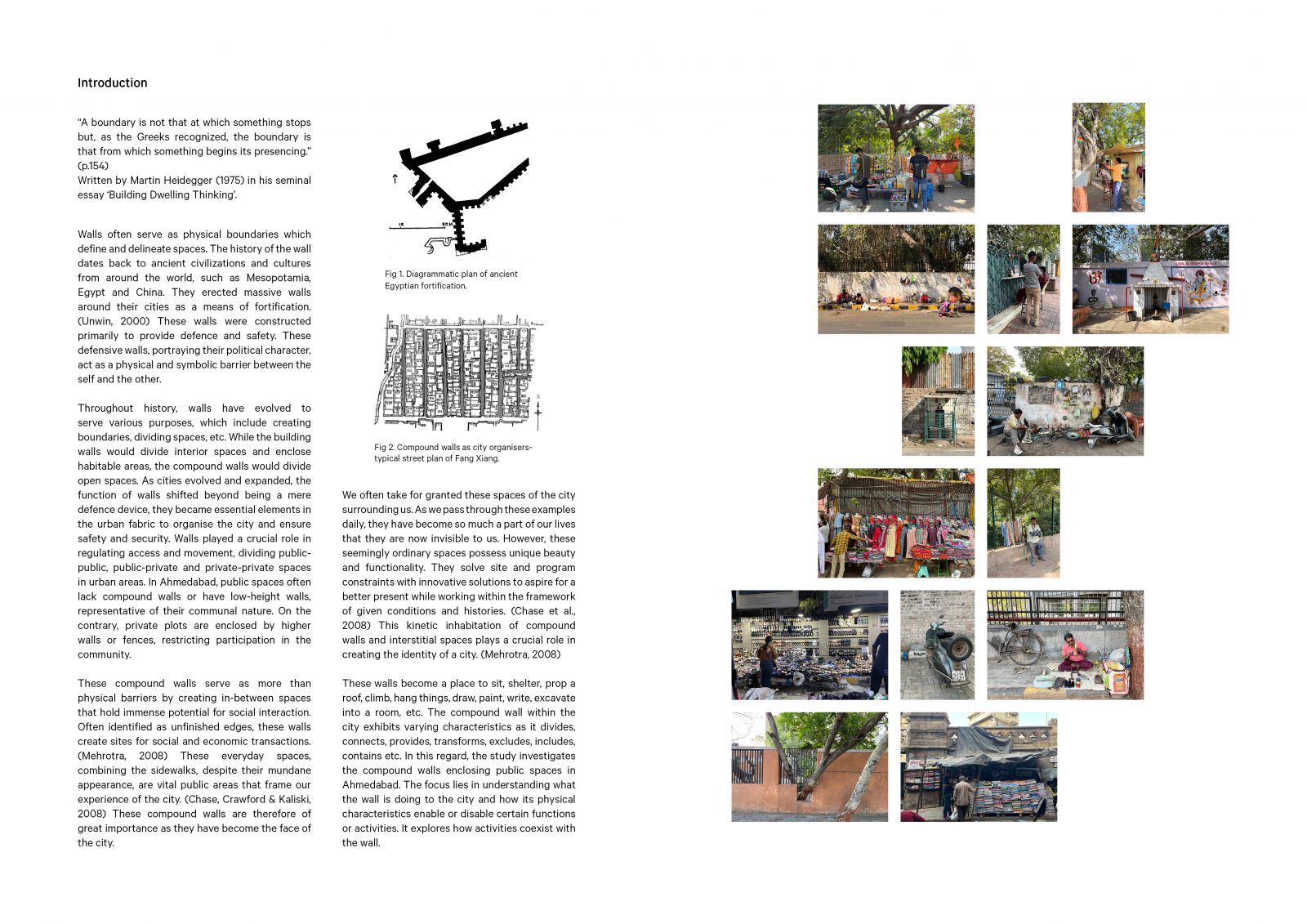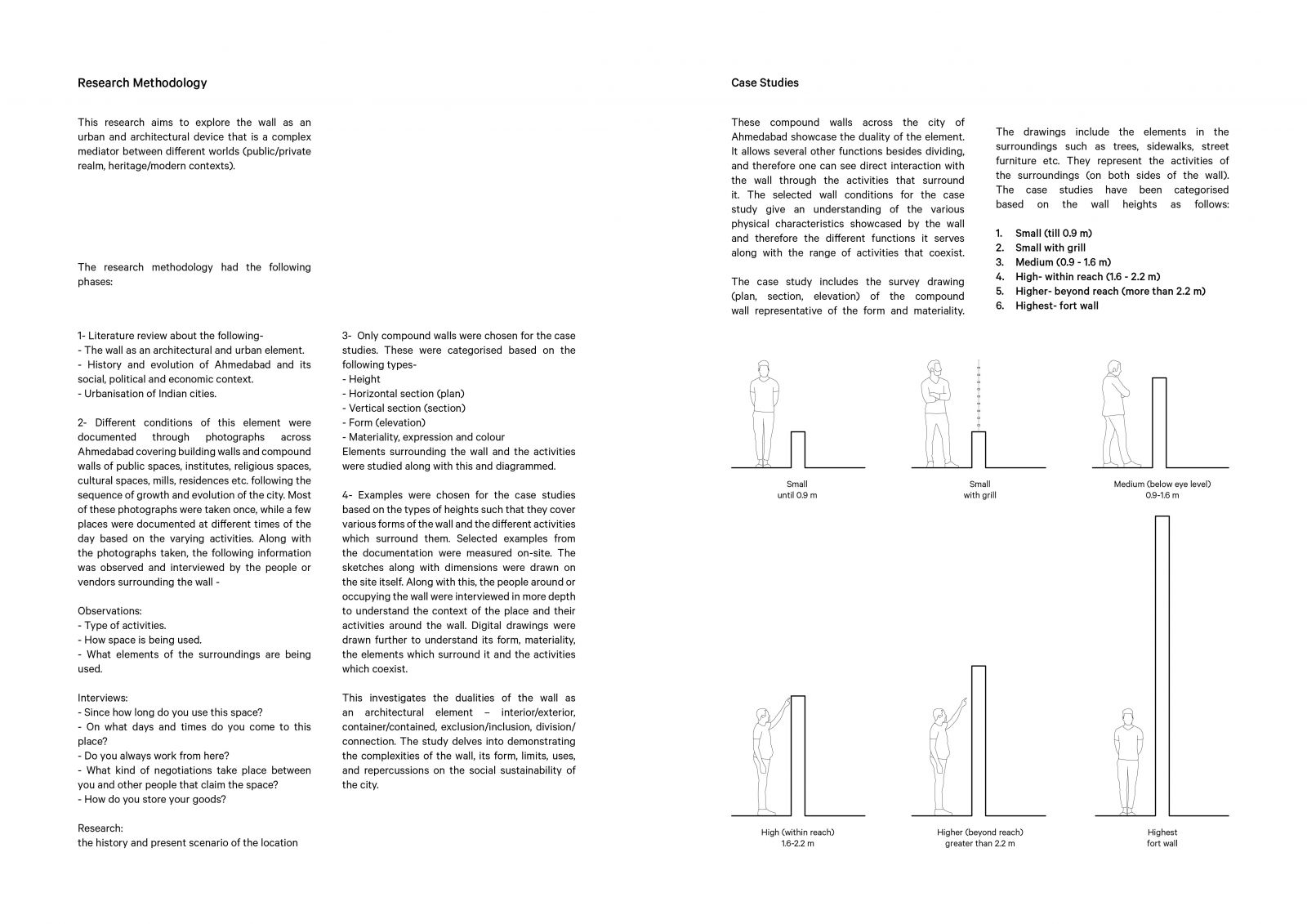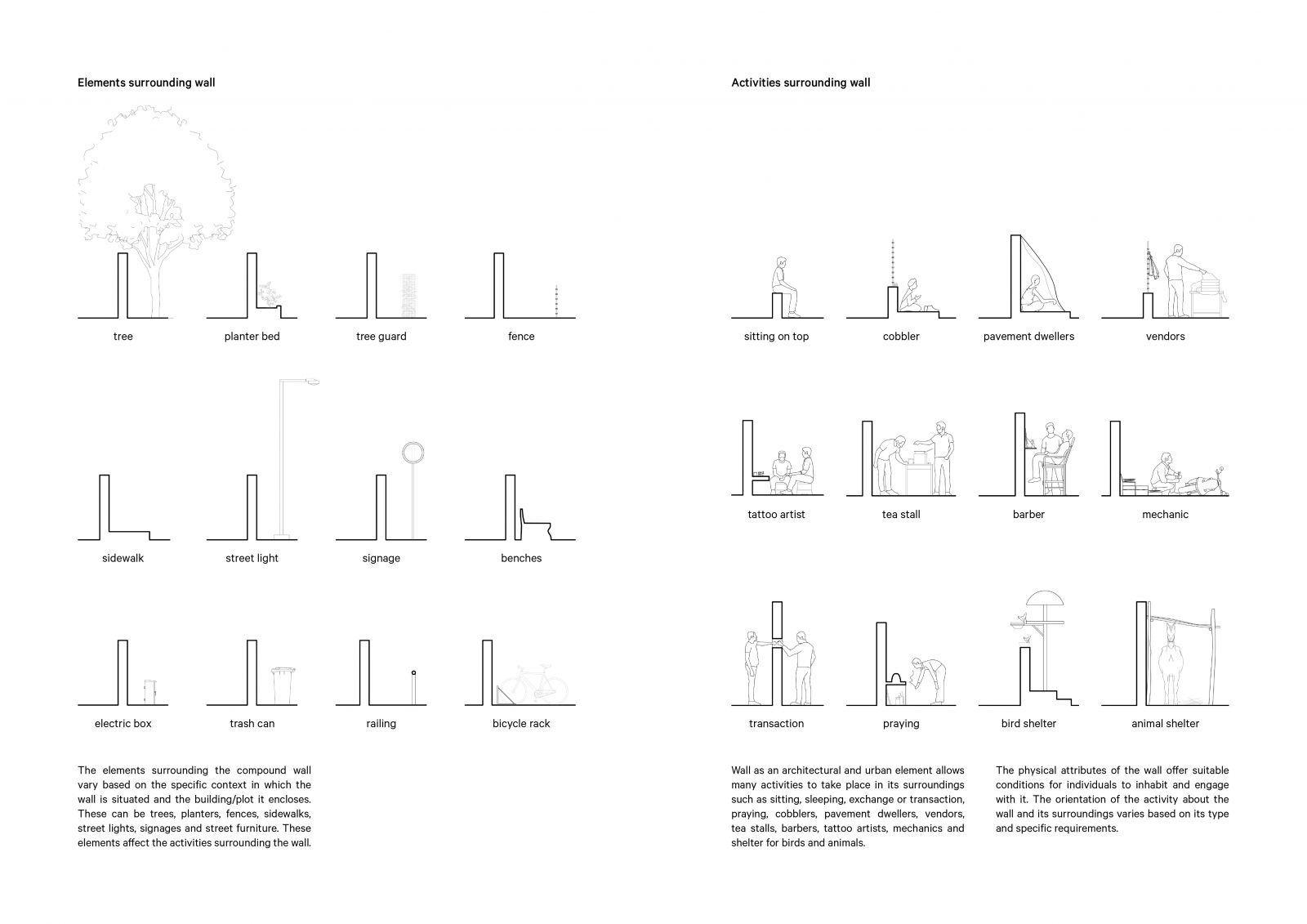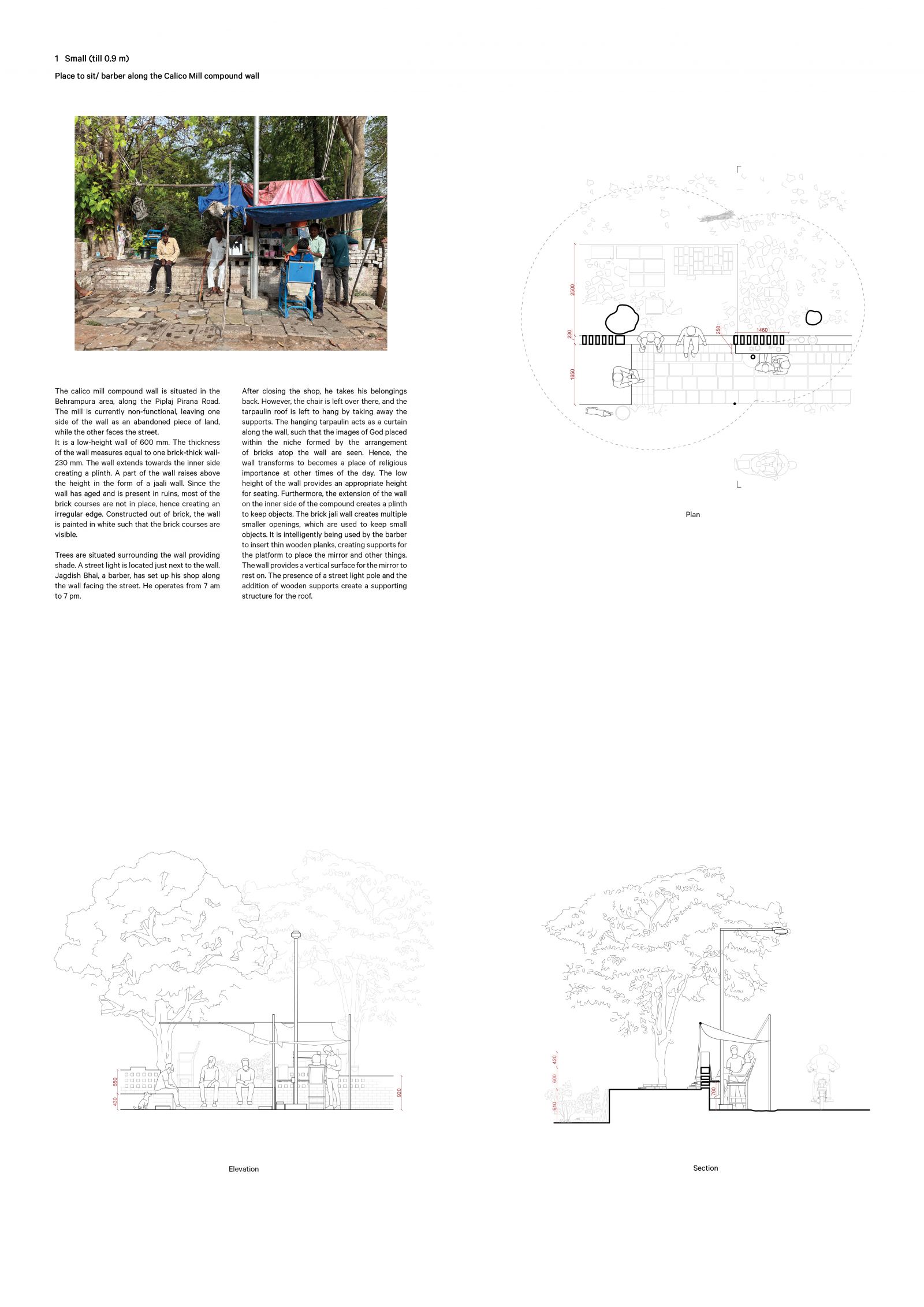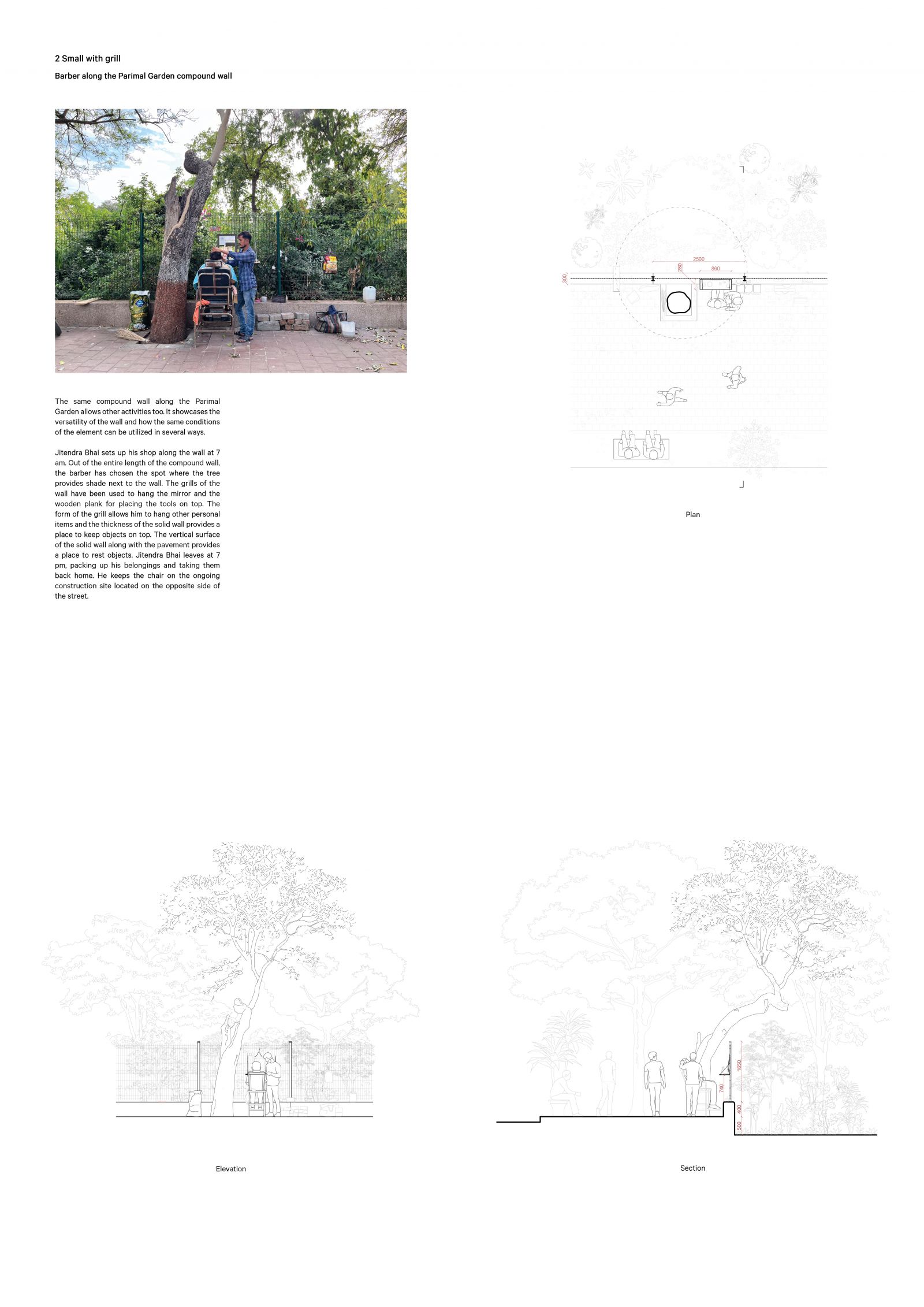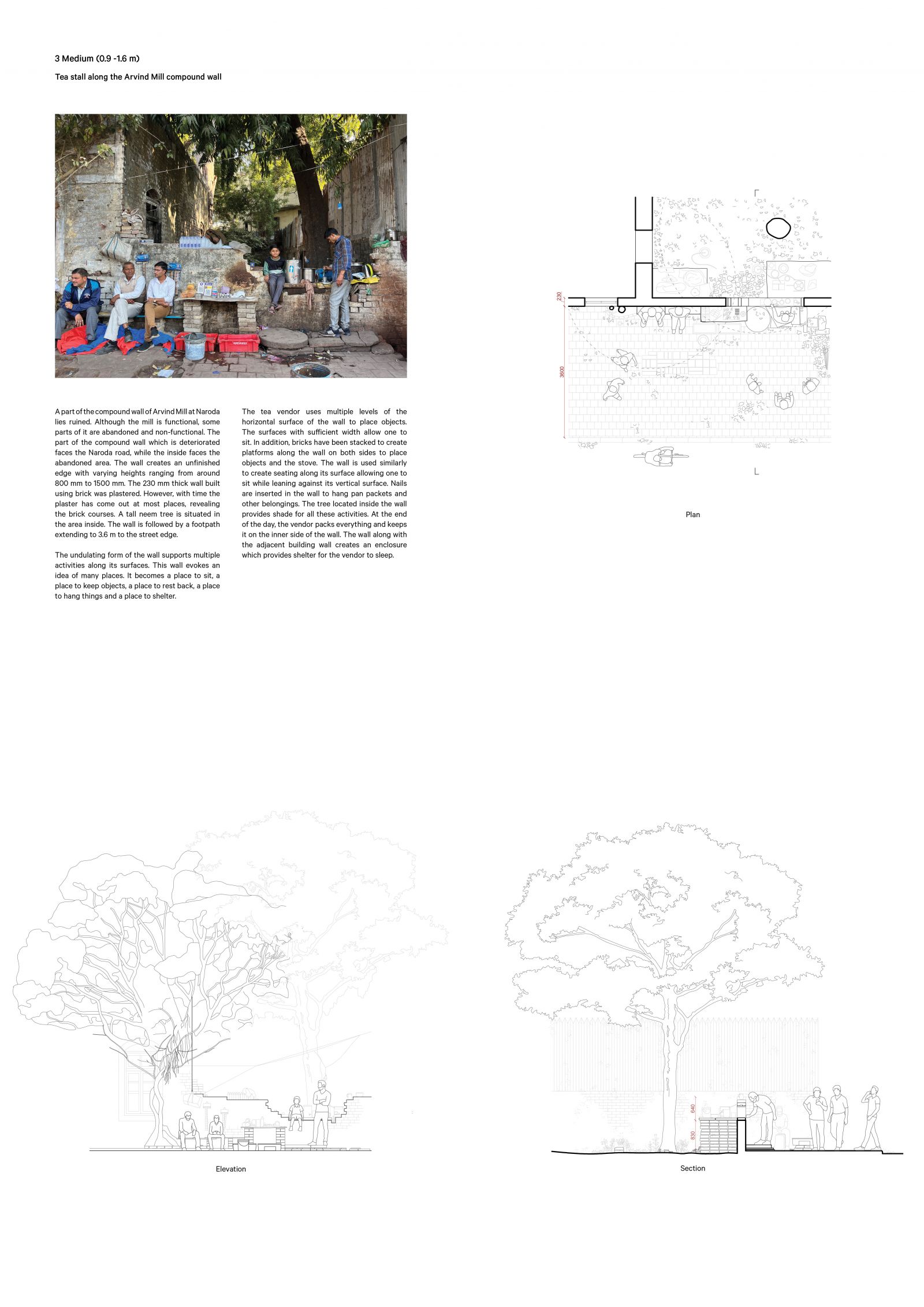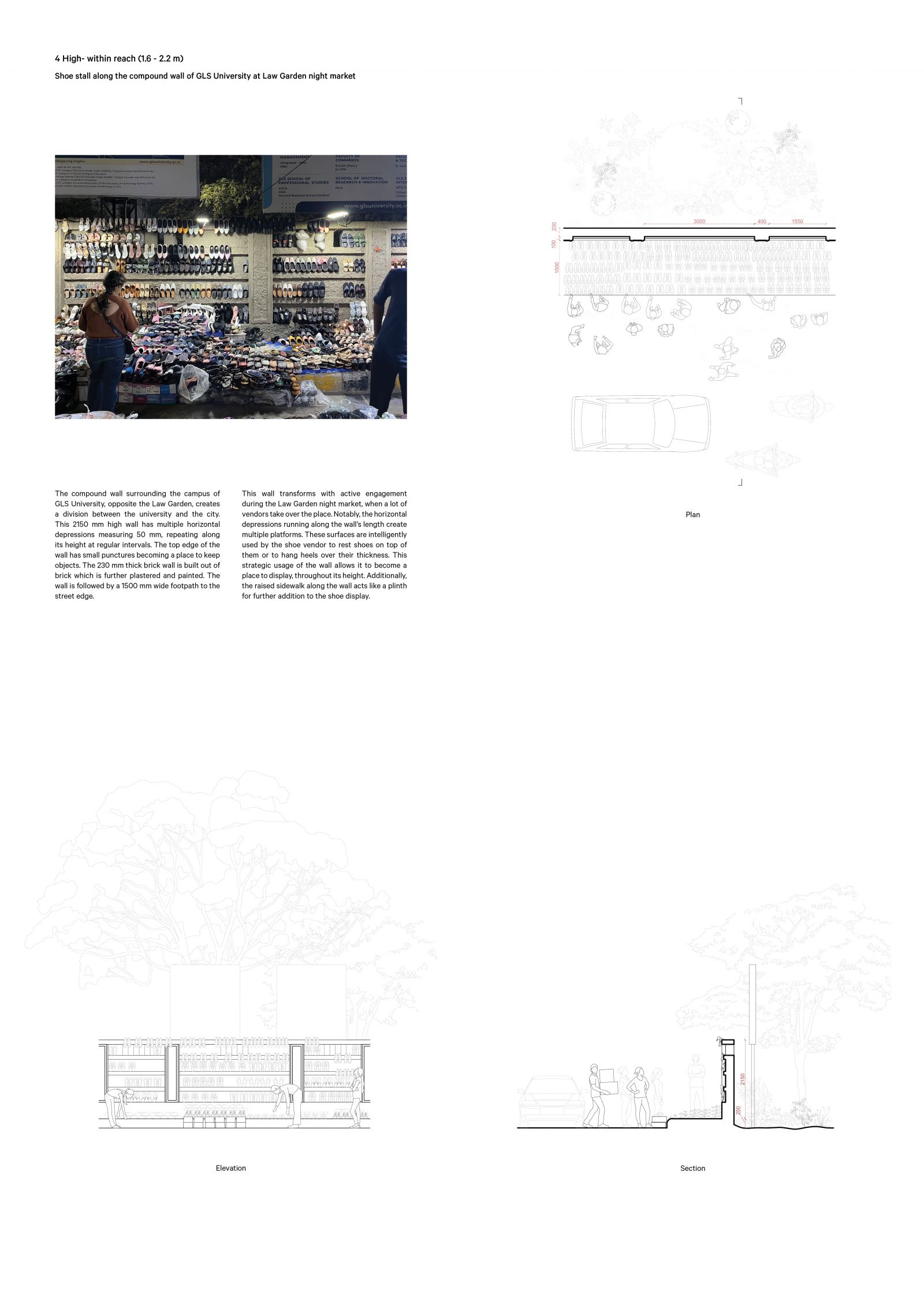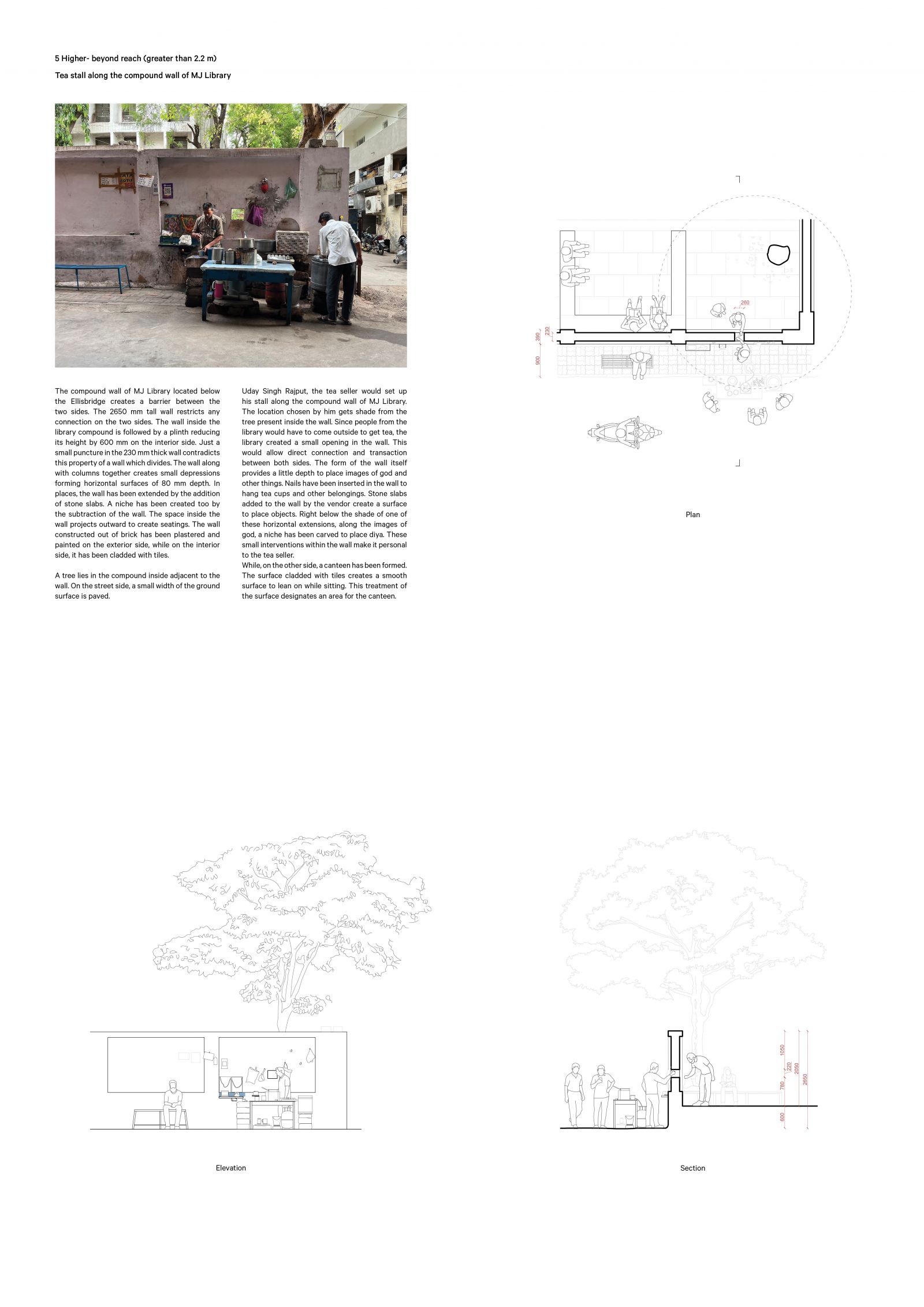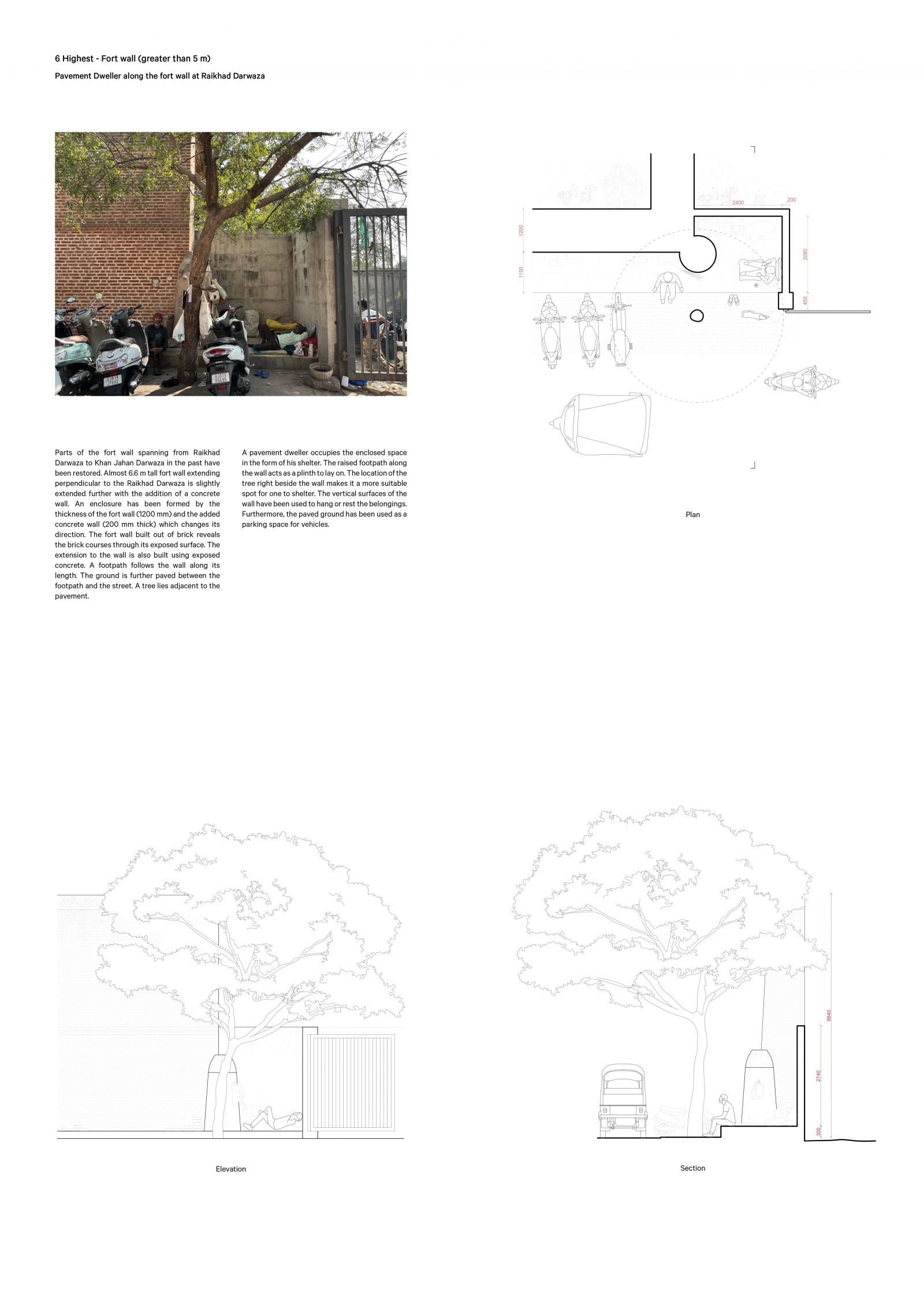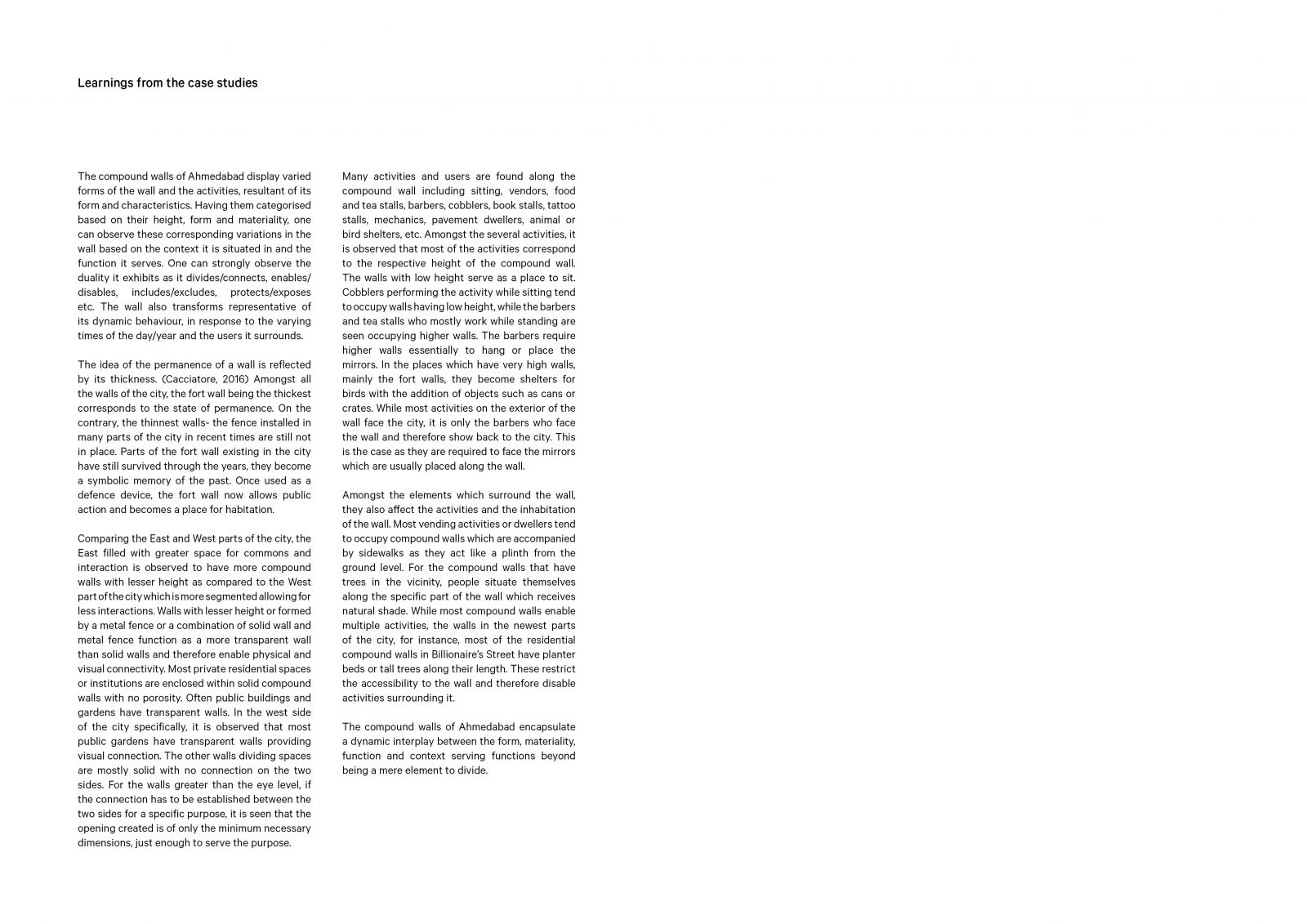Your browser is out-of-date!
For a richer surfing experience on our website, please update your browser. Update my browser now!
For a richer surfing experience on our website, please update your browser. Update my browser now!
Walls often serve as physical boundaries which define and delineate spaces. Throughout history, walls have evolved to serve various purposes, from providing defence to creating boundaries. As cities evolved and expanded, the function of walls shifted beyond being a mere defence device, they became essential elements in the urban fabric to organise the city and ensure security. In Ahmedabad, public spaces often lack compound walls or have low-height walls, representative of their communal nature. On the contrary, private plots are enclosed by higher walls or fences, restricting participation in the community.
These compound walls serve as more than physical barriers by creating in-between spaces that hold immense potential for social interaction. These everyday spaces frame our experience of the city. These compound walls are therefore of great importance as they have become the face of the city. These walls become a place to sit, shelter, prop a roof, climb, hang things, draw, paint, write, excavate into a room, etc. The compound wall within the city exhibits varying characteristics as it divides, connects, provides, transforms, excludes, includes, contains etc. In this regard, the study investigates the compound walls enclosing public spaces in Ahmedabad. The focus lies in understanding what the wall is doing to the city and how its physical characteristics enable or disable certain functions or activities. It explores how activities coexist with the wall.
